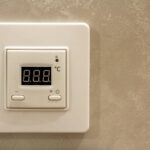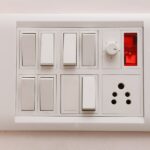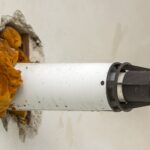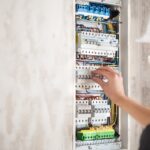Understanding medium voltage insulators MV
Medium voltage insulators MV play a crucial role in electrical distribution systems. These components are designed to support and insulate conductors carrying voltages between 1kV and 36kV. Insulators come in various materials, including porcelain, glass, and polymer composites. Each type offers unique benefits for different applications. Porcelain insulators, for instance, have excellent mechanical strength and can withstand high temperatures. Glass insulators are known for their self-cleaning properties and resistance to UV radiation. Polymer insulators, on the other hand, are lightweight and have superior performance in polluted environments. The choice of insulator depends on factors such as voltage level, environmental conditions, and installation requirements. medium voltage insulators MV https://onninen.pl/en/products/Energetics/Fittings-for-overhead-lines/Accessories-for-medium-voltage-MV-overhead-lines/Medium-voltage-insulators-MV are available in various shapes and sizes to suit different mounting arrangements.
Exploring Accessories for medium voltage MV overhead lines
Overhead lines are a common method for transmitting medium voltage electricity. These systems require specific accessories to ensure safe and efficient operation. Accessories for medium voltage MV overhead lines include conductor clamps, vibration dampers, and spacers. Conductor clamps secure the power lines to the insulators, providing mechanical support and electrical connection. Vibration dampers reduce wind-induced oscillations, preventing fatigue damage to conductors and supporting structures. Spacers maintain the proper distance between conductors, minimizing the risk of phase-to-phase faults. Other essential accessories include arcing horns, which protect insulators from electrical arcs, and bird guards to prevent wildlife-related outages. Accessories for medium voltage MV overhead lines https://onninen.pl/en/products/Energetics/Fittings-for-overhead-lines/Accessories-for-medium-voltage-MV-overhead-lines are designed to withstand harsh environmental conditions and provide long-term reliability.
The importance of proper installation and maintenance
Correct installation of medium voltage equipment is critical for system performance and safety. Technicians must follow manufacturer guidelines and industry standards when installing insulators and accessories. Proper torque application on bolted connections ensures secure attachment and prevents loosening over time. Insulator strings should be assembled with the correct number of units to provide adequate insulation for the operating voltage. Regular maintenance is essential to identify and address potential issues before they lead to failures. Visual inspections can detect signs of damage, such as cracks in insulators or corrosion on metal parts. Thermal imaging can reveal hot spots that may indicate loose connections or overloaded components. Cleaning insulators periodically removes contaminants that can compromise their insulating properties. Implementing a comprehensive maintenance program extends the lifespan of equipment and reduces the risk of unplanned outages.
Selecting the right equipment for your application
Choosing the appropriate medium voltage equipment requires careful consideration of various factors. System voltage is the primary determinant, with equipment rated for the specific voltage class required. Environmental conditions play a significant role in equipment selection. Coastal areas may require insulators with higher creepage distances to cope with salt contamination. Areas prone to lightning strikes benefit from surge arresters to protect equipment from overvoltages. Load current and short-circuit ratings must be considered when selecting conductor sizes and support structures. The physical layout of the installation influences the choice of insulator types and mounting arrangements. Consulting with experienced professionals can help in making informed decisions about equipment selection. Many suppliers offer technical support to assist customers in choosing the most suitable products for their specific needs.
Advancements in medium voltage technology
The field of medium voltage equipment is constantly evolving, with new technologies improving performance and reliability. Smart grid applications are driving the development of sensors and monitoring devices for overhead lines. These systems provide real-time data on line conditions, enabling predictive maintenance and faster fault location. Composite materials are increasingly used in insulator manufacturing, offering improved mechanical strength and reduced weight compared to traditional materials. Energetics https://onninen.pl/en/products/Energetics companies are investing in research to develop more environmentally friendly insulating materials. Advanced coating technologies are enhancing the pollution performance of insulators, reducing the need for frequent cleaning in contaminated areas. As the demand for renewable energy integration grows, medium voltage equipment is adapting to accommodate bidirectional power flows and higher levels of distributed generation. Staying informed about these advancements can help utilities and contractors make future-proof equipment choices.





